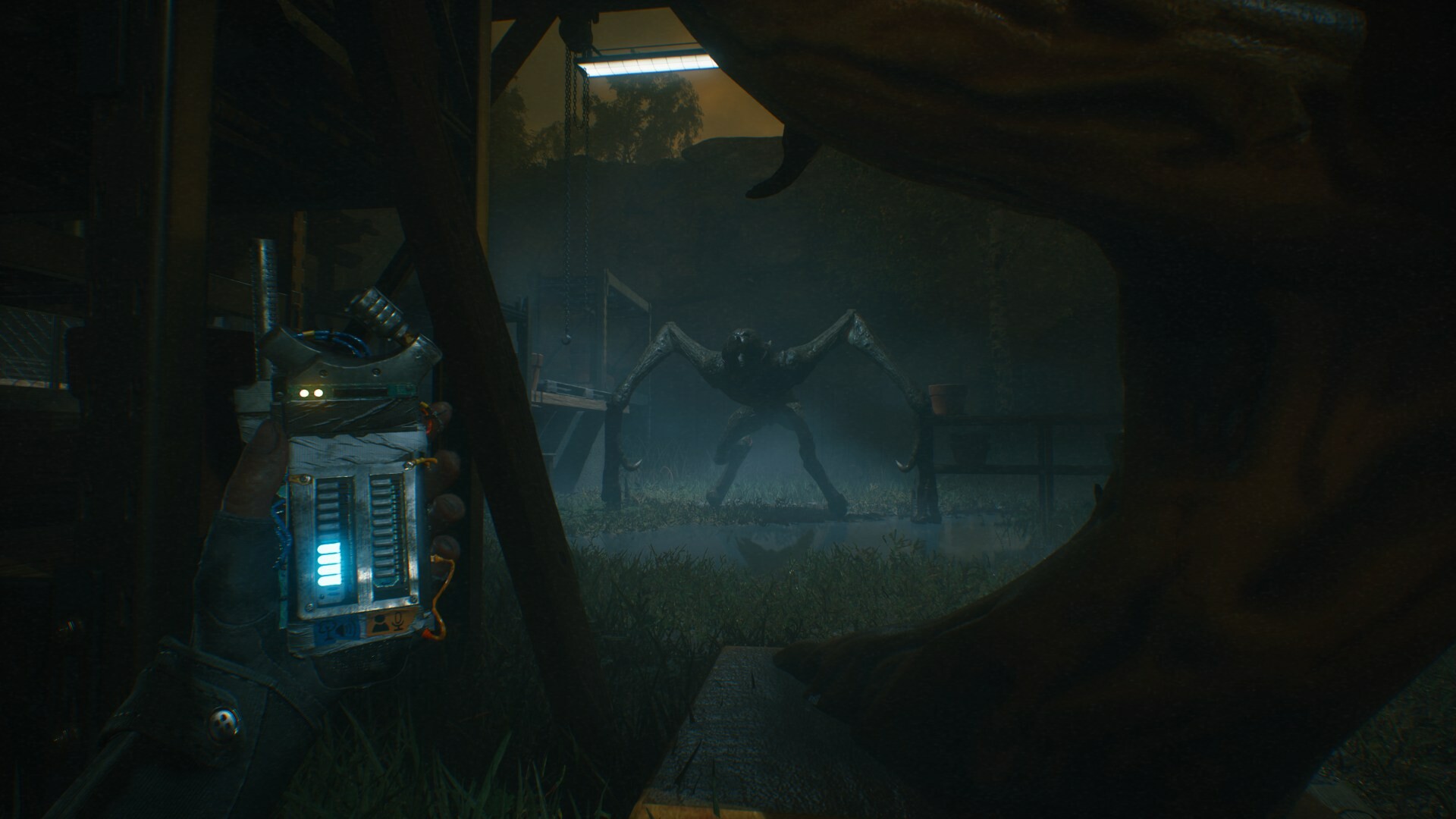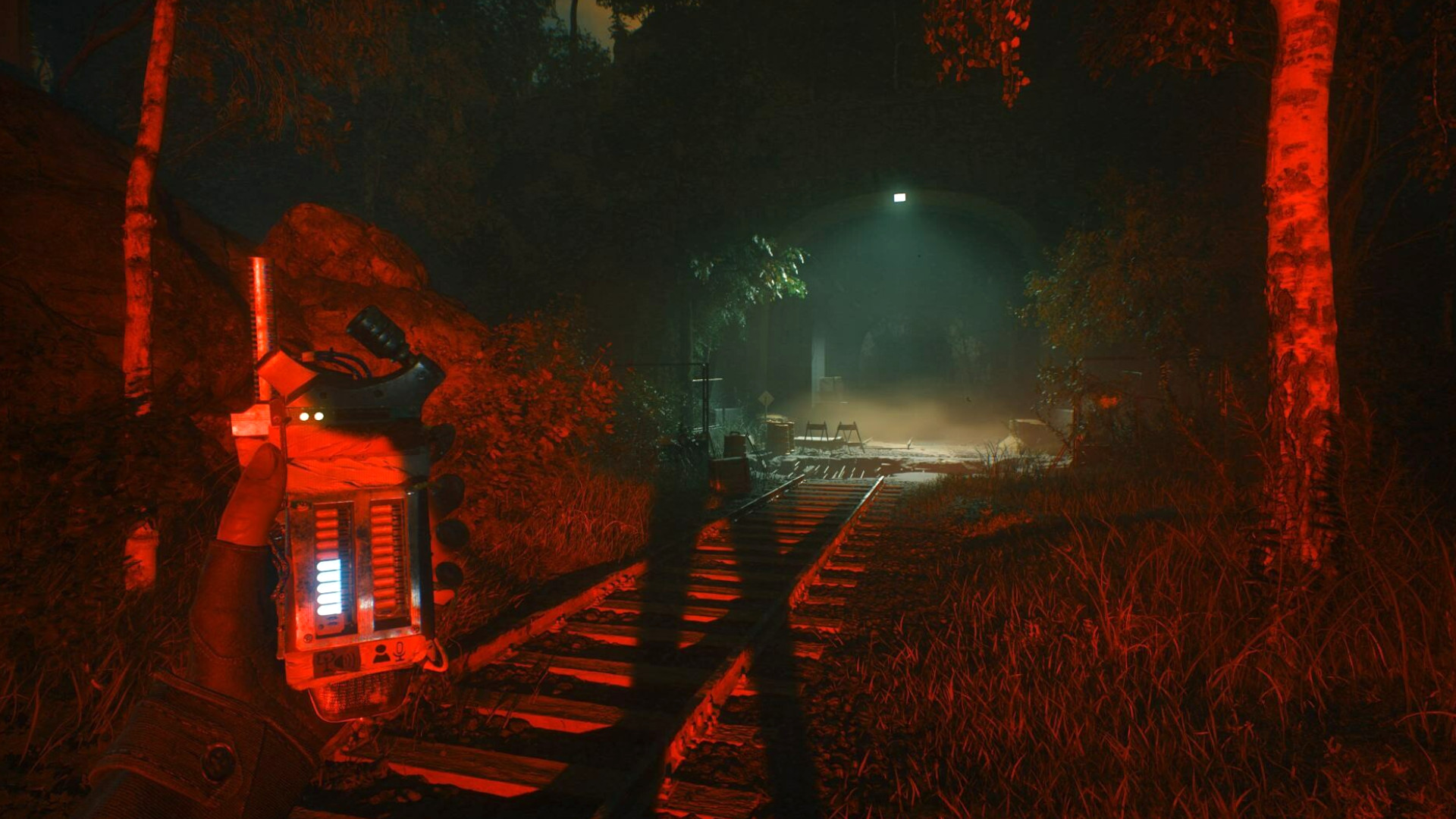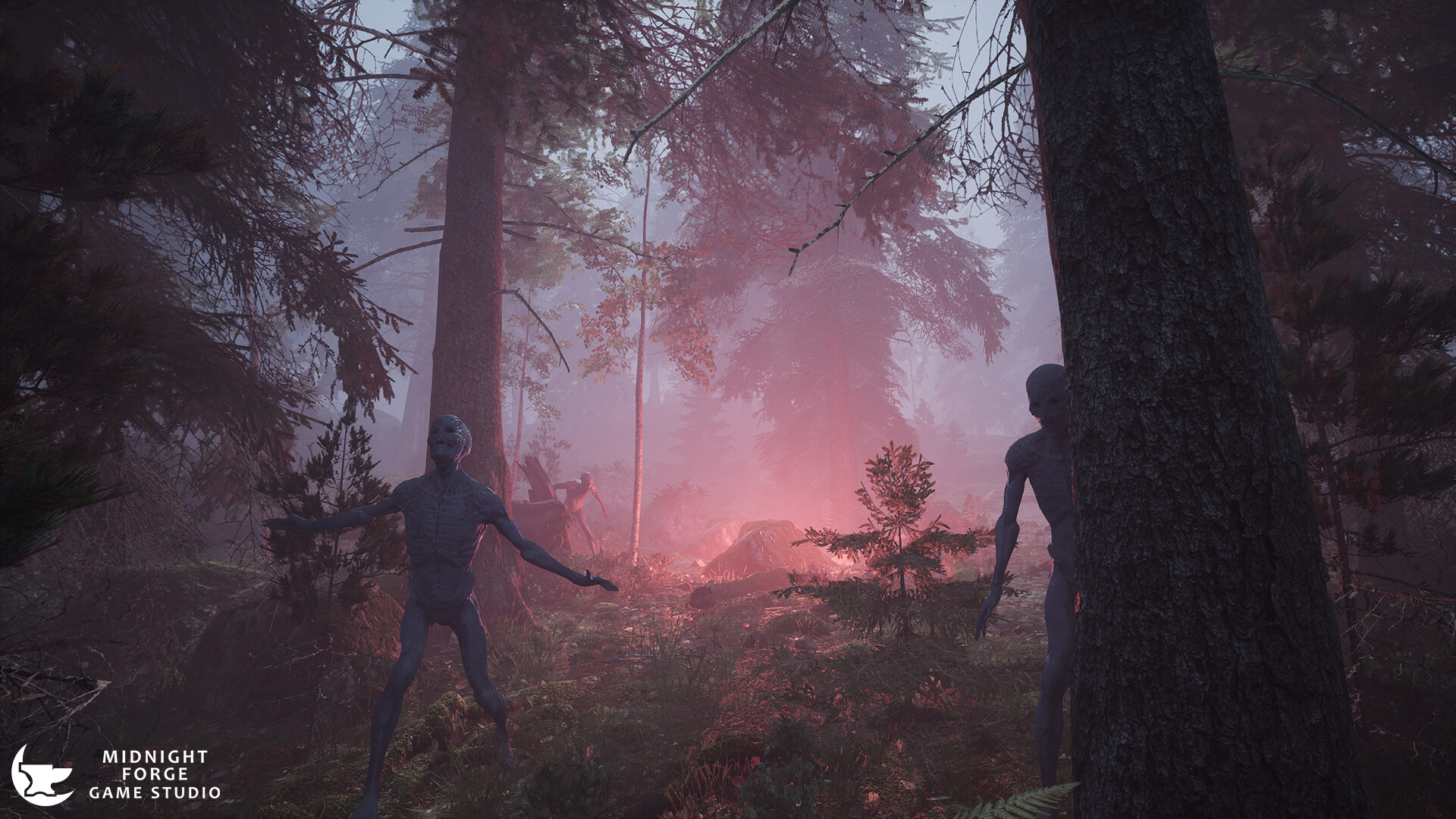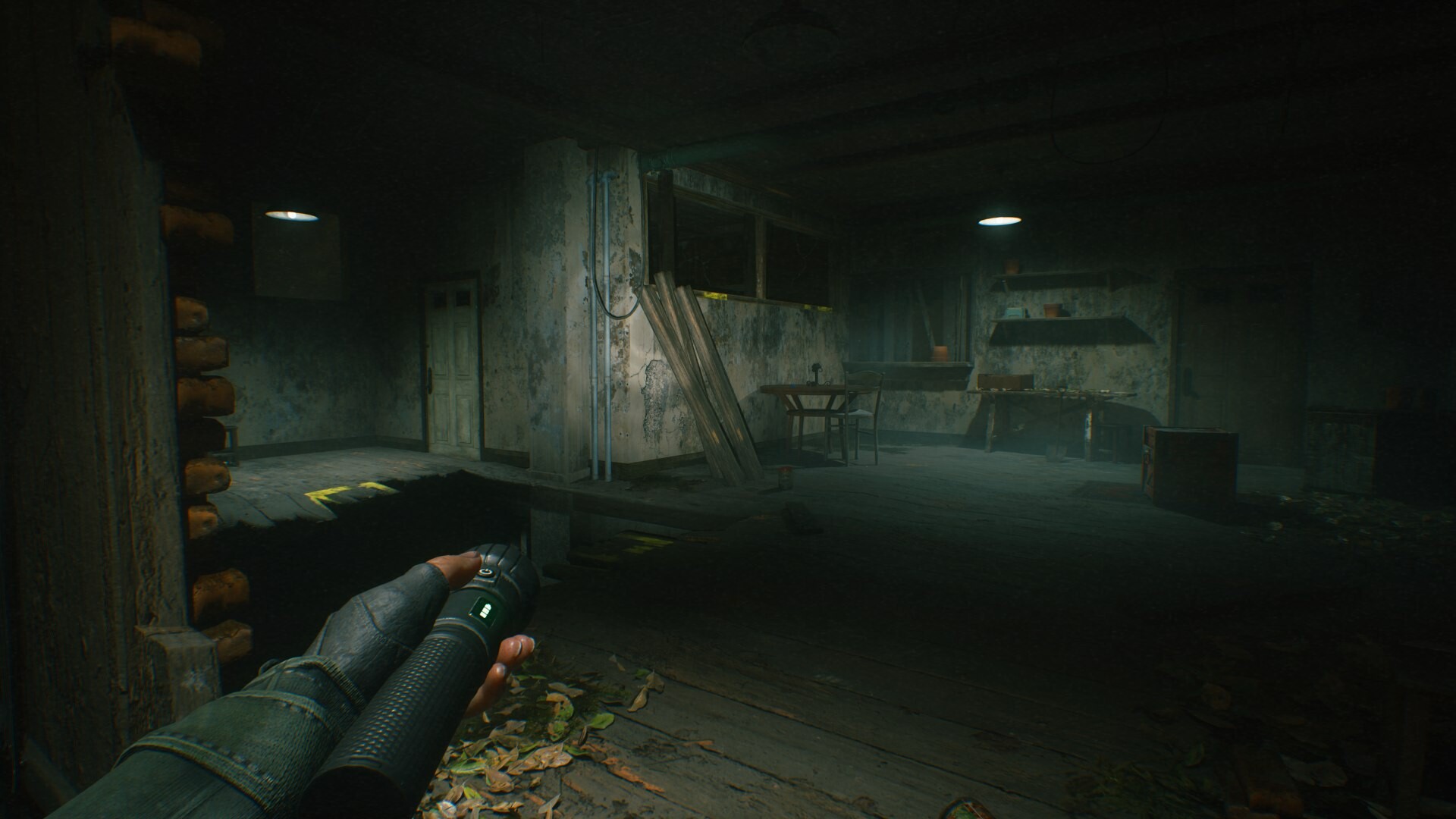Here's how A Quiet Place: The Road Ahead takes inspiration from Alien: Isolation to craft a stealth horror game that "responds sonically to every player action"
Interview | "We reflected a lot on the concept of silence," says Stormind Games of its way into A Quiet Place

In the world of A Quiet Place: The Road Ahead, sensory deprivation is both a hindrance and an asset. The game adaptation takes place in between the two existing Paramount Pictures films of the same name, with Earth overrun by noise-sensitive creatures who hunt their prey using sound alone. Creating contrast between noise and silence makes for a terrifying premise in any great horror movie, but as a game mechanic, it understandably poses a fair challenge. Thankfully, Italian developer Stormind Games tackles it head-on.
"One of the main goals was to create an experience that was faithful to the atmosphere and rules established in the films, while bringing something new compared to classic stealth horror games," says lead game designer Manuel Moavero. "In our game, the player must hide from sound rather than sight, which led us to introduce two central mechanics: the concept of 'sound cover,' or the natural sound pressure of each environment, and the 'phonometer,' which measures its intensity. The player's interaction with the surrounding world revolves around these elements, offering a different approach when facing the creatures."
Stormind's commitment to "honoring the central themes of the films, such as family and loss, while exploring a separate story," allows the Remothered studio to keep the experience accessible yet true to form. But I'm most compelled by this unique sound system. We already know that it takes a page from Alien: Isolation's mic tracking mechanic, meaning the creatures can hear you even when you can't see or hear them. But there's more to making one of the best survival horror games than that, and the process of digging out its key touchstones began in one crucial place: with the movies themselves.
Whispers in the dark


From the sounds of it, Stormind approached The Road Ahead head-first and with painstakingly detailed respect for the source material. "We began by analyzing the first two films frame by frame, making extensive notes and fleshing out the key themes and situations that define A Quiet Place," recalls Stormind CEO and co-founder Antonio Cannata. From this, the developer was able to dig out two key thematic pillars: "the 'stay silent' survival rule, coupled with the relentless creatures and their abilities."
With the cinematic DNA of A Quiet Place being such a key factor, The Road Ahead's narrative-driven, first-person survival horror adventure began to take shape . It "unfolds in a linear sequence of levels from start to finish," Moavero explains, "but [moments] within the levels, exploration zones, puzzles, and even phases where there are close encounters with creatures, allow the player to choose different approaches and strategies." This sounds similar to many of the best survival horror games, and paired with the hide-and-seek likes of Amnesia: The Dark Descent and Outlast, Stormind's recipe sounds primed to lean into its cinematic soundscape as both a lore factor and a key gameplay hook.
"We reflected a lot on the concept of silence, eventually considering the relationship between [sound and lack thereof] as a relative reality," says Moavero. "Beyond developing the concept of 'sound cover' and the tool to manage it – the phonometer – from the sound design point of view, we focused on creating a world that responded sonically to every player action." That means every step you take, every item interaction, every gasp into the microphone could be the difference between life and death. "The amount of noise produced by the player effectively works as a resource to manage and control," Moavero explains. "Depending on the noise they produce or avoid, the player will gain more or less maneuvering space and freedom of movement as a consequence – which will be crucial during close encounters with the creatures."
Hushed tones

One of the main goals was to create an experience that was faithful to the atmosphere and rules established in the films, while bringing something new compared to classic stealth horror games.
Manuel Moavero
According to senior narrative designer Luca Esposito, these encounters are crucial for reframing the player in an active rather than passive role, thereby differentiating it from the Quiet Place films. "Our main goal was to enrich the world known from the films with new characters and an original story. The pure horror component and the nature of the creatures remain faithful to the source material. The novelty lies in the tools given to Alex to overcome obstacles and in how the environment challenges the player."
Weekly digests, tales from the communities you love, and more
As for which game had a "massive influence" on Stormind, you have one guess – and if it's seven-foot tall and dribbling acid, you're on the money. "Definitely Alien: Isolation and their Xenomorphs, which are very similar to the creatures we had to recreate in A Quiet Place: The Road Ahead," says Esposito. Xenomorphs hunting down Ripley in the claustrophobic confines of the Sevastopol might feel a lot tighter of an experience than Alex hunkering down in a vast, dystopian American wilderness, but the two games build fear and dread in similar ways. "For example, the concept that the enemy is always listening plays a critical role in both games: the Xenomorph uses sight, smell, and hearing to hunt the protagonist, whereas the creatures in A Quiet Place rely almost entirely on their acute sense of hearing to detect any sound."
As for whether it's possible to take matters into your own hands and respond aggressively to their presence, Moavero advises against it. "The creatures have extreme mobility, a skin as hard as armor that protects them from any firearm, and despite their blindness, they have extremely precise hearing." In short: "they are practically invincible, and any direct confrontation with them is unthinkable. Distracting them by making noise with throwables is an option, but you have to consider that they become very agitated when the player does this, and that needs to be taken into account." But Stormind puts at least some fight in the player's hands, Moavero hints, as Alex discovers the creatures' weakness to electronic items over the course of the game and wields it to her player's advantage.
With A Quiet Place: The Road Ahead being just one of the newest video game releases of 2024, it joins a long list of horror games that use the genre to tell very human stories. Alex's journey might be a very different entry to the Quiet Place franchise, but it's one that clearly has a lot of love, mechanical density, and respect for its roots behind it – and those factors alone make it a no-brainer pick for me this Fall.

Jasmine is a Senior Staff Writer at GamesRadar+. Raised in Hong Kong and having graduated with an English Literature degree from Queen Mary, University of London in 2017, her passion for entertainment writing has taken her from reviewing underground concerts to blogging about the intersection between horror movies and browser games. Having made the career jump from TV broadcast operations to video games journalism during the pandemic, she cut her teeth as a freelance writer with TheGamer, Gamezo, and Tech Radar Gaming before accepting a full-time role at GamesRadar.


